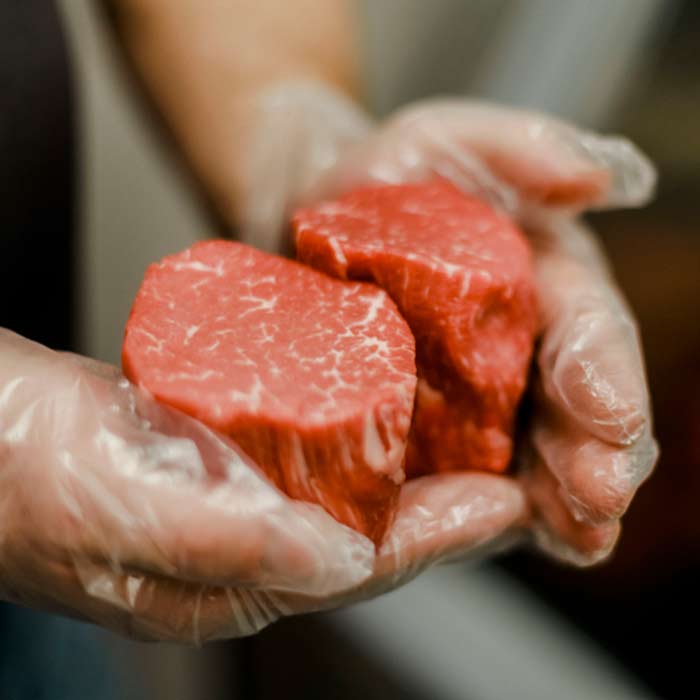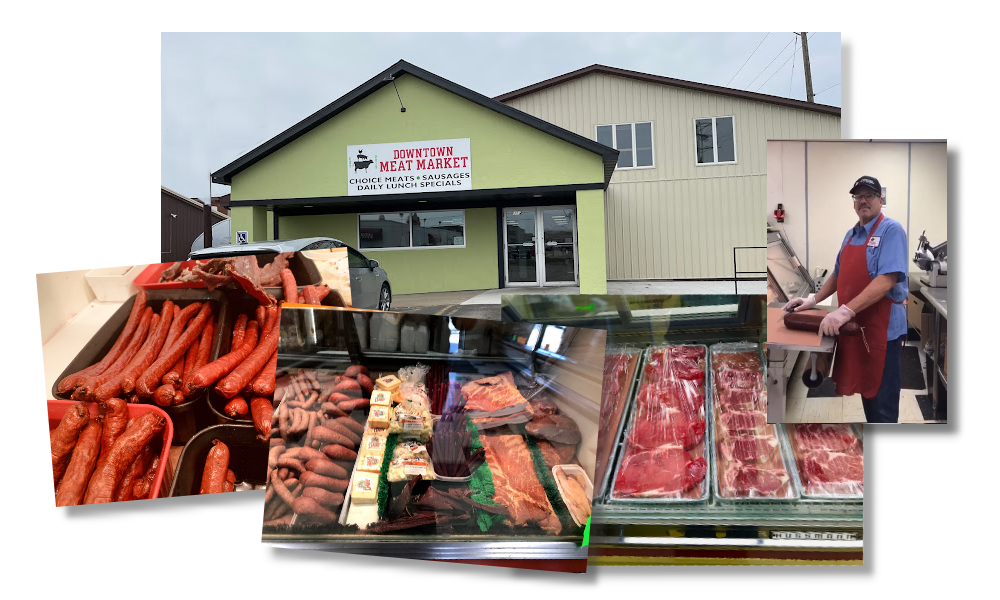Bagley Farms Meat Market Edwardsville IL: Your Best Location for Regional Meat Choice
Bagley Farms Meat Market Edwardsville IL: Your Best Location for Regional Meat Choice
Blog Article
Discover the Art of the Butcher's Cut in a Modern Meat Market
In the ever-evolving landscape of modern-day meat markets, the butcher's cut has transcended its traditional roots, merging olden craftsmanship with modern practices. Today's butchers are not merely processors of meat; they are knowledgeable artisans who highlight sustainability and moral sourcing. Their expertise in picking and preparing cuts tailored to specific cooking requirements uses an unmatched eating experience. What genuinely sets the modern butcher apart is their ability to build a much deeper connection between customers and the origins of their meat. Just how do these masters equilibrium practice with advancement, and what ramifications does this have for the future of meat usage?
Evolution of Butchery Methods
The evolution of butchery strategies shows an abundant tapestry of advancement and adaptation driven by improvements in technology, adjustments in consumer need, and a deeper understanding of meat scientific research. Historically, butchery was a craft gave through generations, with techniques developed over centuries to take full advantage of yield and taste. The commercial transformation ushered in automation, transforming typical methods and enabling massive processing.
The mid-20th century saw butchery strategies additionally fine-tuned by clinical insights into muscle mass biology and meat aging, boosting both tenderness and taste. Advancements like vacuum product packaging and refrigeration extended product shelf-life, enabling butchers to branch out offerings and improve high quality control. This period additionally marked the surge of specific tools, such as band saws and meat slicers, which enhanced accuracy and performance in meat processing.

The 21st century has actually presented electronic technology right into the butchery realm. Digital systems now help in monitoring pet provenance and optimizing cuts to satisfy details customer preferences. Furthermore, a renewal in artisanal butchery has actually emerged, mixing traditional abilities with modern understanding to deal with consumers looking for moral and lasting meat choices. This development highlights a dynamic interplay in between practice and technology, conference modern needs while maintaining the craft's heritage.
Recognizing Meat Cuts
Comprehending the complexities of meat cuts is necessary for both butchers and consumers looking for high quality and worth. Each cut comes from a various part of the pet, passing on one-of-a-kind flavors, appearances, and cooking approaches - bagley farms meat market edwardsville il. Mastery of these distinctions not only improves cooking experiences however additionally maximizes the energy of each carcass. For butchers, precise cuts show ability and respect for the craft, making sure minimal waste and ideal return.

Recognizing muscular tissue structure is essential; muscles made use of much more frequently by the pet have a tendency to be tougher and are best matched for sluggish cooking approaches, while less-used muscle mass, like those found in the loin, are more tender and perfect for barbecuing or roasting. Experience with these distinctions equips consumers to make enlightened choices, boosting their culinary undertakings.
Choosing Quality Meat
Selecting the appropriate meat involves more than just picking an aesthetically appealing piece from the display screen. The art of picking quality meat needs a critical eye and expertise of specific characteristics that symbolize quality and excellence.
Secondly, consider the marbling, which refers to the white flecks of fat within the muscle mass. Correct marbling is a vital indicator of tenderness and flavor, as it melts during cooking, improving the meat's juiciness. Keep in mind, greater marbling usually correlates with premium quality cuts, such as USDA Prime.
Texture is another vital aspect; meat should feel firm to the touch, not slimy or overly soft. Additionally, bear in mind the fragrance. Fresh meat must have a tidy, neutral odor, without any kind of sour or repulsive smells.
Coupling Cuts With Food Preparation Techniques

Alternatively, tougher cuts like brisket and chuck roast are abundant in collagen, which damages down into jelly when prepared gradually. These cuts are perfect for braising or slow-moving roasting, enabling the meat to tenderize gradually and develop deep, complicated flavors. Cuts such as short ribs and pork shoulder get on well with slow-cooking approaches, where extended cooking times transform their durable textures into delicious dishes.
Lamb shanks and oxtail, which need extended food preparation to tenderize, are perfect prospects for stewing or slow-moving simmering. These techniques coax out rich, passionate tastes while keeping dampness. By understanding the distinct qualities of each look at these guys cut, chefs and home cooks alike can elevate their culinary creations, making sure each recipe is both pleasing and remarkable.
The Butcher's Function Today
Navigating the progressing landscape of the contemporary meat market, the butcher's function today extends beyond simple preparation of cuts. Contemporary butchers are cooking craftsmens, teachers, and advocates for lasting techniques. They bridge the gap in between the farm and the fork by making certain honest sourcing, comprehending animal husbandry, and focusing on openness in the supply chain. This shift shows the growing customer demand for top quality over quantity, where provenance and animal well-being are vital.
Along with crafting precise cuts, butchers currently involve straight with customers, supplying cooking recommendations and tailoring choices to suit specific needs and choices. Their know-how in meat aging, marbling, and flavor profiles encourages consumers to make informed choices, improving their culinary experiences. This personalized solution exemplifies the butcher's progressing role as a relied on advisor in the cooking area.
Moreover, butchers are essential in minimizing waste, making use of whole pets to produce varied products such as sausages and supplies. This comprehensive technique not just respects the animal yet likewise straightens with contemporary sustainability objectives. This way, the contemporary butcher symbolizes you can check here both practice and advancement, adapting to an ever-changing market while maintaining the creativity and integrity of their craft.
Verdict
Mastery in recognizing varied meat cuts and high quality indicators empowers butchers to give enlightened suggestions, lining up particular cuts with optimal cooking methods. By recognizing historical techniques while embracing modern needs, the butcher's role continues to be crucial in today's sophisticated meat market.
Report this page